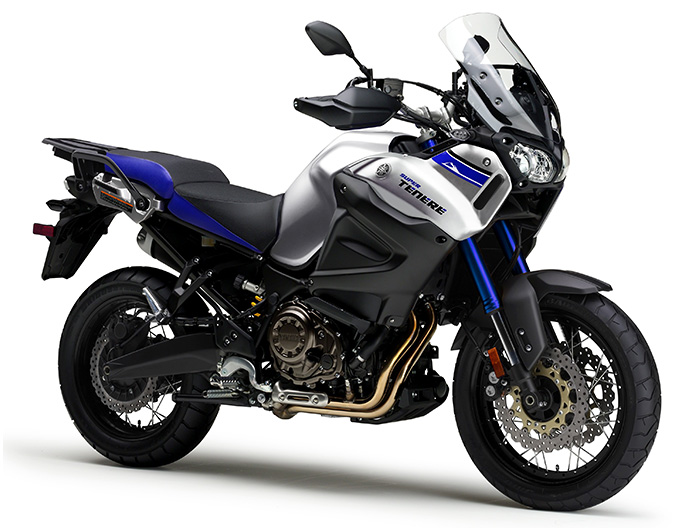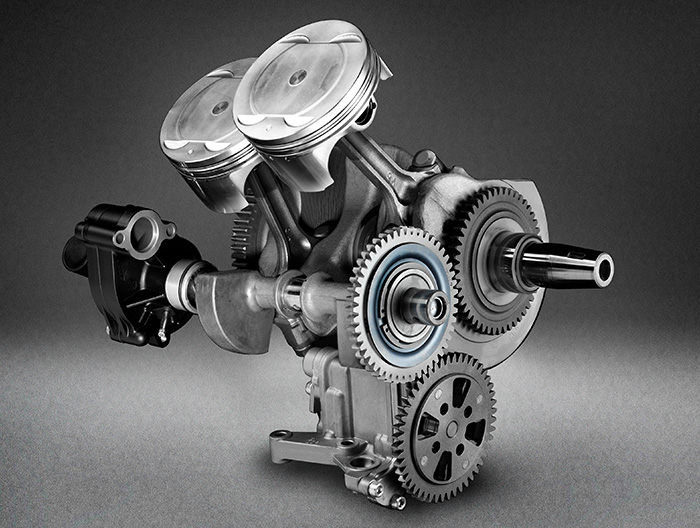Smooth Torque Refined in the Desert
Introducing the stories behind Yamaha Motor's technologies.

The Dakar Rally is widely regarded as the most demanding form of motorsport in the world. In the 20 years between 1979 and 1998, Yamaha secured nine wins in the motorcycle category. One of Yamaha’s 4-stroke engine technologies is the 270° crank that was developed to smooth out the torque curve and bring out a more linear engine character. This technology was born during Yamaha’s 20 years of racing across the vast deserts of the African continent.
In the first Paris-Dakar Rally (also known as the Oasis Rally) and the 2nd Paris-Dakar Rally, the single-cylinder XT500 led the French Sonauto Yamaha Team to victory. Following that however, the average speeds of the event steadily increased and Yamaha struggled to keep up with its rivals’ 2-cylinder machines. Then in 1991, using the XTZ750 Super Ténéré production bike as a base for the factory machine, Yamaha was finally able to take the victory after a ten year hiatus.
In the period of development that followed, including real-world testing on location, the engine configuration Yamaha finally settled on was an in-line 2-cylinder with a 270° crank. It provided excellent traction in the desert sands—just what riders had been asking for. The approach was to fine-tune where the connecting rods would link to the crank to eliminate unevenness in the torque curve and produce a much more linear engine character. Before Yamaha took successive Paris-Dakar victories in 1997 and 1998 with the XTZ850TRX that used a 270° crank, the TRX850 production model released in 1995 was equipped with one and many motorcyclists were able to experience its easy-to-use character and speed. The same approach of adjusting where the connecting rods and crank join in order to smooth out the torque curve for a more linear engine character has been carried on with the XT1200Z Super Ténéré (#1, #2) and MT-07 (#3) production models of today. The design’s excellence was proven in not only in the desert sand, but on the asphalt as well.



The Technology That Is the 270° Crank
In the course of developing the machine for the Paris-Dakar Rally, the team’s focus was on the “quality” of the torque produced by the engine. While analyzing the power and torque produced by the combustion inside the chamber, one theory emerged: maybe the unevenness in the torque curve is created by the forces acting on the two moving pistons when converting the power created by combustion into drive force.
It was this idea that led the team to altering the angle of where the two connecting rods would couple to the crank, and the prototype engine they produced smoothed the torque curve. While doing prototype test rides in the Algerian desert, the engine’s uneven firing interval (combustion) resulted in a machine that was easier to ride. The torque characteristics were very similar to those of a 90° V-twin, but the new engine was shorter in length, allowing for more chassis design freedom. This in-line 2-cylinder engine configuration represented an innovation.
Both the YZR-M1 currently used in MotoGP—the pinnacle class of motorcycle road racing—and the YZF-R1 production supersport model feature an in-line 4-cylinder engine with a crossplane crankshaft. For these engines as well, the focus of the development was the quality of the torque produced. After testing the crossplane YZR-M1 engine for the first time in 2004, MotoGP rider Valentino Rossi said it was “sweet,” an opinion he still holds to this day (#4). Though the riding surfaces may differ, the pursuit has always been the same: ease of use. The approach and viewpoint in both kinds of racing was to smooth out the torque and make the bike easier for the rider to use.
Related Link
Off-road Mania Chapter IV: From the Desert Sands: Ténéré
